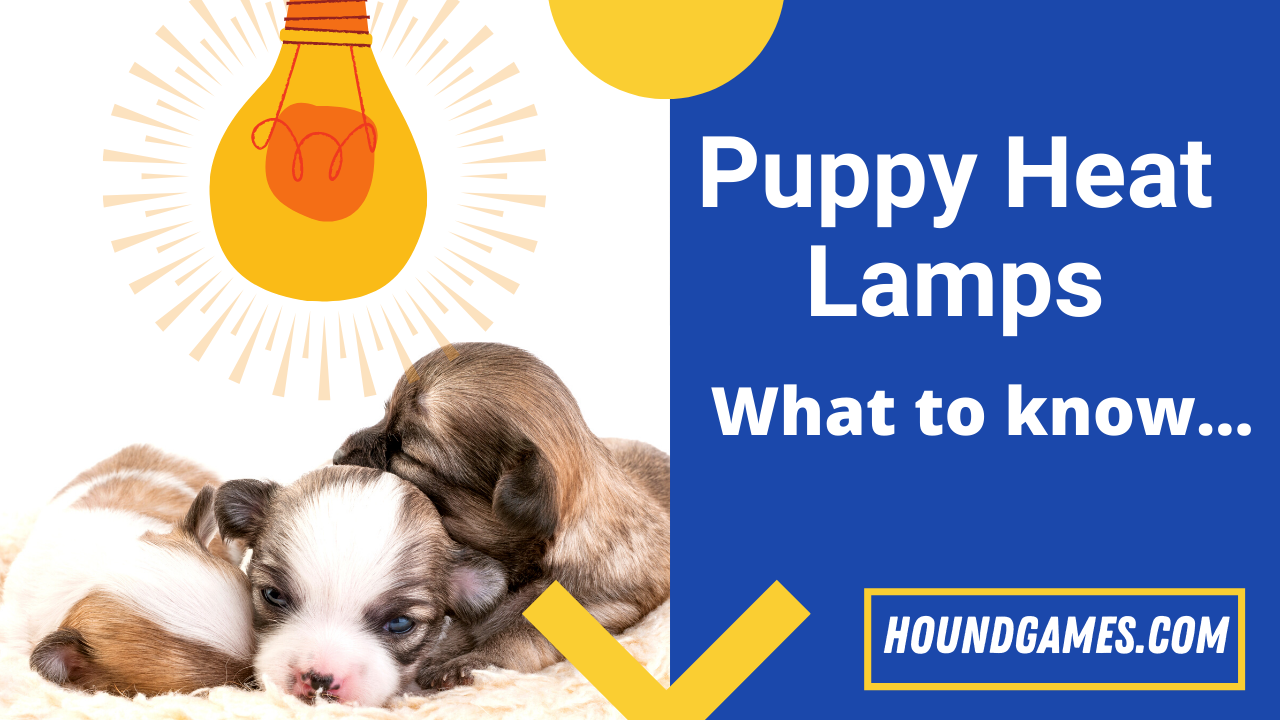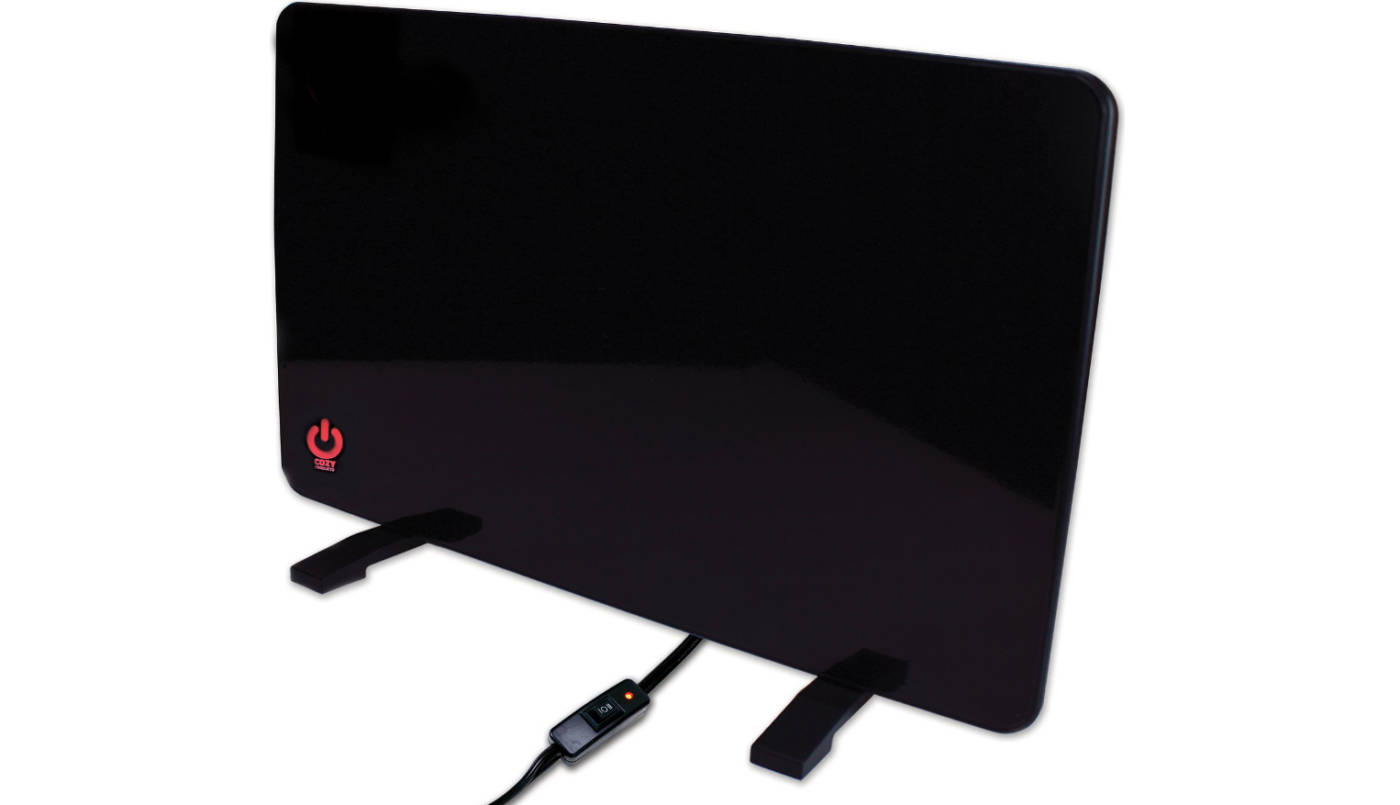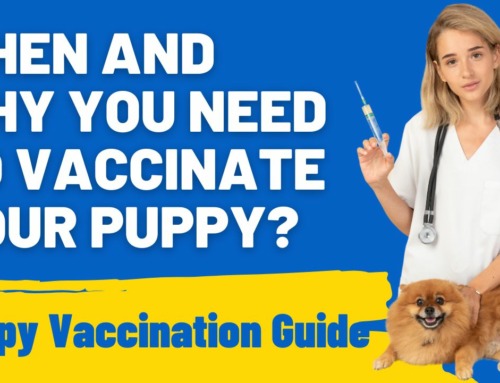Whether you are a first-time breeder or your dog surprised you with an unplanned pregnancy, the basics of puppy rearing remain the same. In this article we’ll look at the consideration of puppy heat lamps, how high to hang them, puppy temperature requirements, and more.
Should you use a heat lamp for puppies?
In an air-conditioned and heated home, and with the warmth of their mother, a litter of puppies will likely not require a heat lamp. However, puppies cannot regulate their own body temperature until they are about six weeks old, so their environmental temperature needs to be monitored to avoid hypothermia (especially for vulnerable puppies).
The ideal ambient temperature for newborn puppies is 85-90°F (29-32°C). After seven to ten days, this can be reduced to 80°F (26.7°C). Finally, 72°F (22.2°C) after about four weeks or so. At six weeks, puppies should be able to regulate their own body temperatures.
Note: The room temperature does not need to be 85-90°F (29-32°C), only the immediate area of the puppies.
Even if your puppies are born in a house with heating or air conditioning, it may be best to have a thermostat in the box, and a heating lamp on standby. This way you can monitor their temperature, and if required, turn on the heating lamp.
Even a moderate drop in temperature can be life-threatening for young puppies.
If too much of their energy reserves produce body heat, they are at a physiological disadvantage.
Consequences of low temperature for puppies
Some puppies are more at risk than others. For instance, there may be puppies with puppy fading syndrome, usually during the critical first five days. This is often a heartbreaking situation, as there is usually no clear reason a puppy simply isn’t thriving.
They may have a low birth rate or begin to lose weight. Often, they struggle to latch on to their mother’s teat, even if you are there to help them. In essence, they seem to just be fading away.
Two keys to avoiding this situation are hygiene and making sure each puppy drinks as much of their mother’s milk during the first three days as possible.
A colostrum replacer is necessary if their mother can’t feed them for any reason.
Nevertheless, puppies that are failing to thrive are more vulnerable to succumbing to hypothermia or hyperthermia, and so temperature control is even more vital for these little ones.
Cold exposure also compromises the mammalian immune system, making it easier for puppies to succumb to illness.
A compromised immune system can also lead to less immediate health problems, such as stunted physical development. Luckily heat lamps can help control the environmental temperature, and by doing so, protect puppies from hypo and hyperthermia.
The primary advantage of puppy heat lamps is that they offer a solution to minor temperature variances. In other words, if the temperature is only off by a couple of degrees, a heat lamp can help correct it, when it is properly installed.
Heat Incubator
For newborn puppies an incubator can be a great way to ensure they have the warmth they require. The advantage is that the temperature can be kept regulated, as no outside temps can affect what’s going on inside.
It also has the added benefit of providing protection, and is a hygienic environment for them to thrive. Incubators are generally used from newborn to 4-6 weeks old, but it also depends on the health of the puppy.
Here is the incubator we recommend:
| Preview | Product | Price | |
|---|---|---|---|

|
HKDQ Puppy Incubator with Heating - Puppy Incubator,Incubator for Newborn Puppies and Kittens,Kitten... |
$129.00 |
Buy on Amazon |
You may wish to read our post Is Your Puppy is Cold? How to tell and what to do…
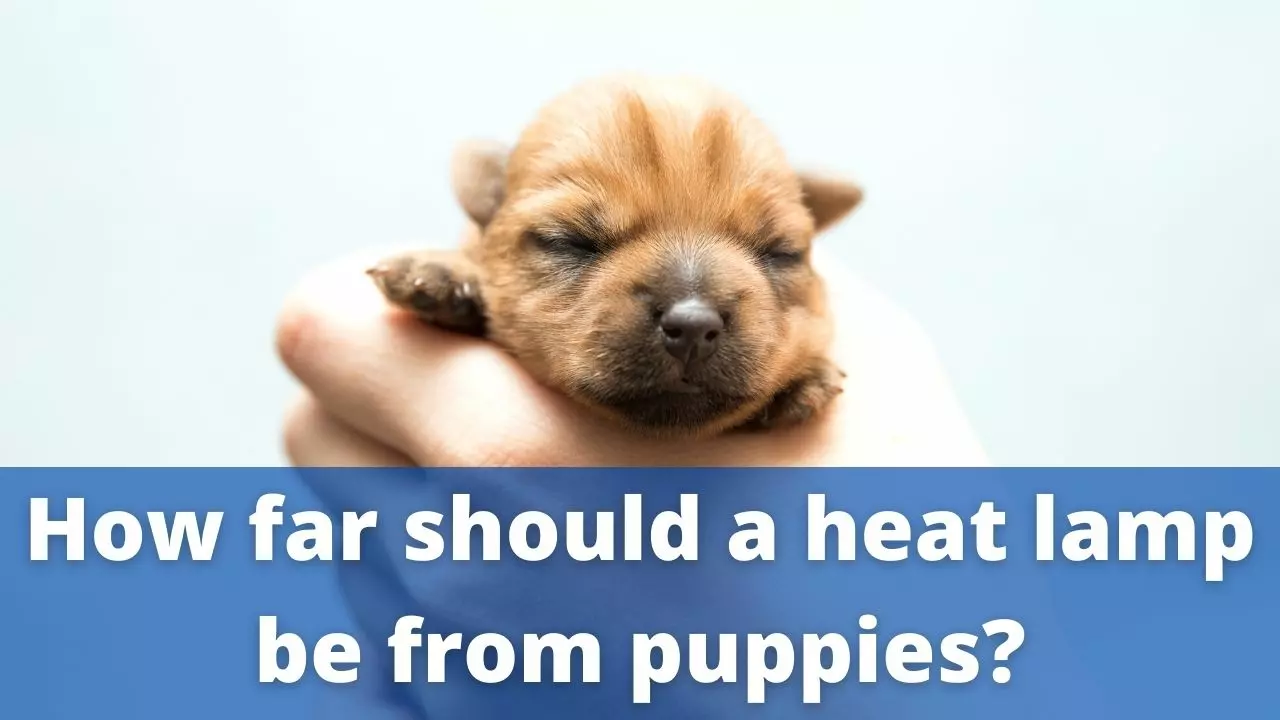
How long do puppies need a heat lamp
Puppies typically need a heat lamp for the first few weeks of their lives. This is especially important if they are newborns or very young, as they are unable to regulate their body temperature effectively. The heat lamp should be provided until they are able to maintain their body temperature on their own, usually around 3 to 4 weeks old.
However, keep in mind that the exact age at which the heat lamp can be removed varies. While many puppies start to regulate their body temperature better at around 3 to 4 weeks of age, this can depend on the breed, overall health, and environmental conditions.
It’s always best to consult with a veterinarian for guidance tailored to the specific litter.
How far should a heat lamp be from puppies?
The general guideline for newborn puppies is to hang a heat lamp about five or six feet above the box. The lamp should be thoroughly secured, as a fallen lamp can cause fires and could burn the puppies or mother. You also need to keep in mind that your mother dog will be closer to the lamp.
A heat lamp too close to the mother could make her uncomfortably hot if she is feeding. There is also the risk of her knocking over the lamp when she stands if she is a bigger dog, so securing a grid between the box and the lamp can be helpful.
On the other hand, you will need to do some testing to get the perfect height for your specific setup. The best thing to do is to install a thermostat low to the ground before the puppies are born and adjust the height of the lamp until it keeps the box temperature steady around 85-90°F (29-32°C).
In addition, the ideal distance for a heat lamp depends on the strength of the lamp in question and the area you plan to heat. For example, a standard 100-watt heat lamp can service an area of four to five cubic feet.
Depending on the wattage, heat lamps cover a wide range of climates, and so the distance between the lamp and the puppies essentially fine-tunes the temperature.
An open area requires that the lamp be closer than in an enclosed area. Both require ventilation to let excess heat escape so that the area can maintain the desired temperature.
Because of all the variables, there is no one right answer regarding the heat lamp placement distance. Therefore, we use an accurate thermometer to measure the temperature near the puppies and adjust the distance accordingly.
Are you interested in reading this post, Should You Choose the Biggest Puppy in the Litter?
The ideal ambient temperature for puppies
The ideal ambient temperature for newborn puppies is 85-90°F (29-32°C). After seven to ten days, this can be reduced to 80°F (26.7°C). Finally, 72°F (22.2°C) after about four weeks or so. At six weeks, puppies should be able to regulate their own body temperatures.
If the puppies are in a very cold environment, you may want to keep the heat lamp on.
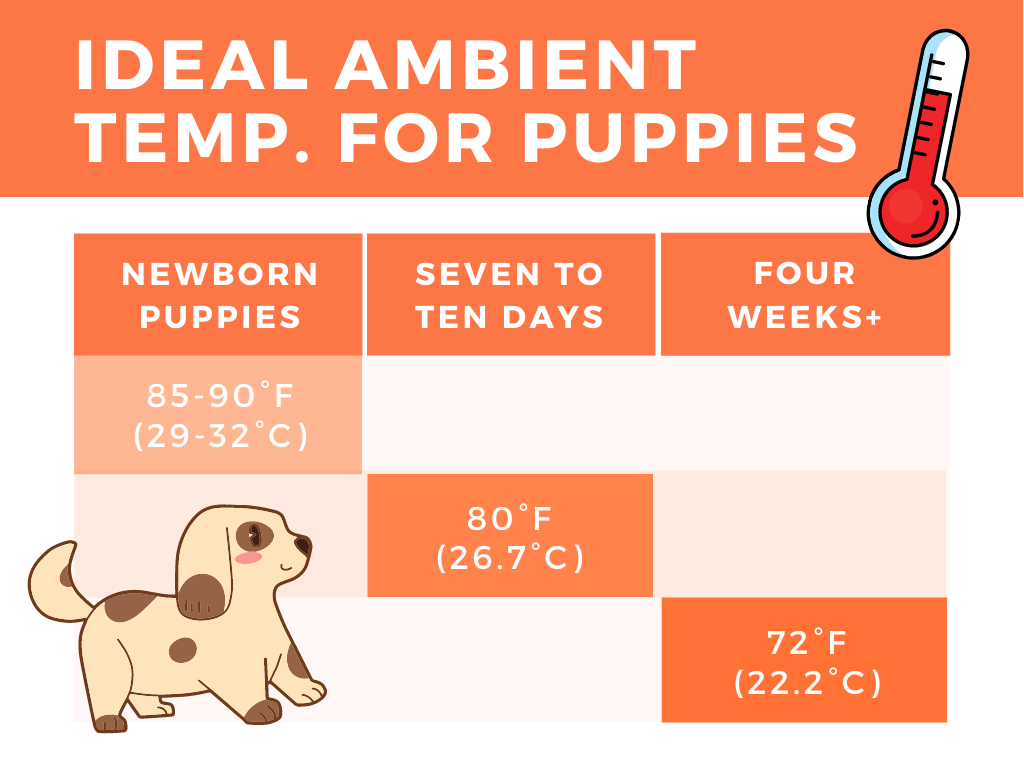
What size heat lamp should you use for puppies?
The most popular heat lamps for puppies are 60-watts, 100-watts, and 150-watts. A 60-watt bulb can reach temperatures of 200°F (93°C) against its own surface, with the heat dispersing rapidly the further away you move from the bulb.
The distance between the puppies and the lamp also depends on the ambient temperature and whether the area is enclosed.
The lamp’s ideal size (or power) depends entirely on the size of the area you want to heat and the ambient temperature. In other words, if your puppies are indoors in a relatively temperature-controlled environment, then a 60-watt bulb may be more than enough.
If your puppies are in a more open area, or an area more vulnerable to the cold, then you need to look at investing in a 100 or a 150-watt bulb.
Once installed, you will hang the lamp and test the temperature using a thermostat and check that it reads the correct temperature using the above chart. If it is hotter than this, the lamp will need to be raised. If it’s cooler than this, then you can lower the lamp.
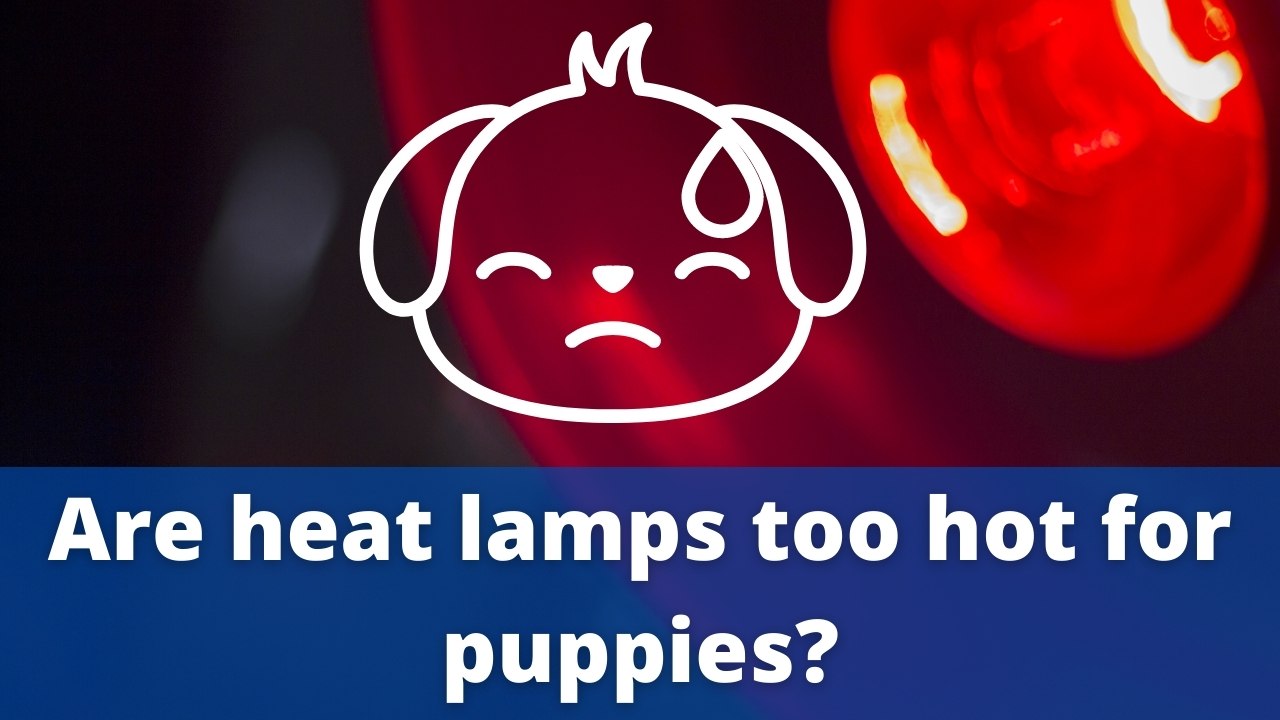
Are heat lamps too hot for puppies?
A heat lamp’s effect on the temperature depends entirely on the temperature of the area you want to heat and its distance from your puppies. A stronger wattage bulb presents a higher risk of the lamp being too hot. Keep an eye on your thermostat and your puppies.
A clear sign your puppies are too warm is that they will disperse and sleep far away from each other.
On the other hand, puppies crawling over each other and piling on is usually a sign it’s too cold and they’re seeking body heat.
Comfortable litters will usually bundle close to one another when sleeping, but will not necessarily make a pile.
A mother can also show another sign of discomfort in temperature. If she is curling around her puppies, she may be trying to shield them from the cold.
Keep in mind that a mother who is producing a lot of milk may go through stages of heavy panting before feeding puppies. This is not always related to temperature, although the suckling puppies and the heat lamp together may make her uncomfortably hot.
If the panting is not resolved by feeding her puppies, and she presents any other symptoms such as stiff movement or tremors, she may need veterinary attention immediately for conditions such as eclampsia.
Would you like to read our post, Dog Drinking Water and Vomiting? Here’s Why…
Can you leave a heat lamp on all night for puppies?
Once you are certain that your puppies can maintain a comfortable temperature throughout the night, it is safe for you to leave their heat lamp on for extended periods. You need to test the temperature near your puppies frequently throughout the night using a thermostat.
Making sure the heat lamp is secure and can’t fall or be knocked over at night is the most critical.
You will need to adjust your heat lamp to compensate for changes in the weather and seasons. One way to make sure that the setup is a bit more flexible is to have enough space for your pups to move closer to or further from the lamp as needed.
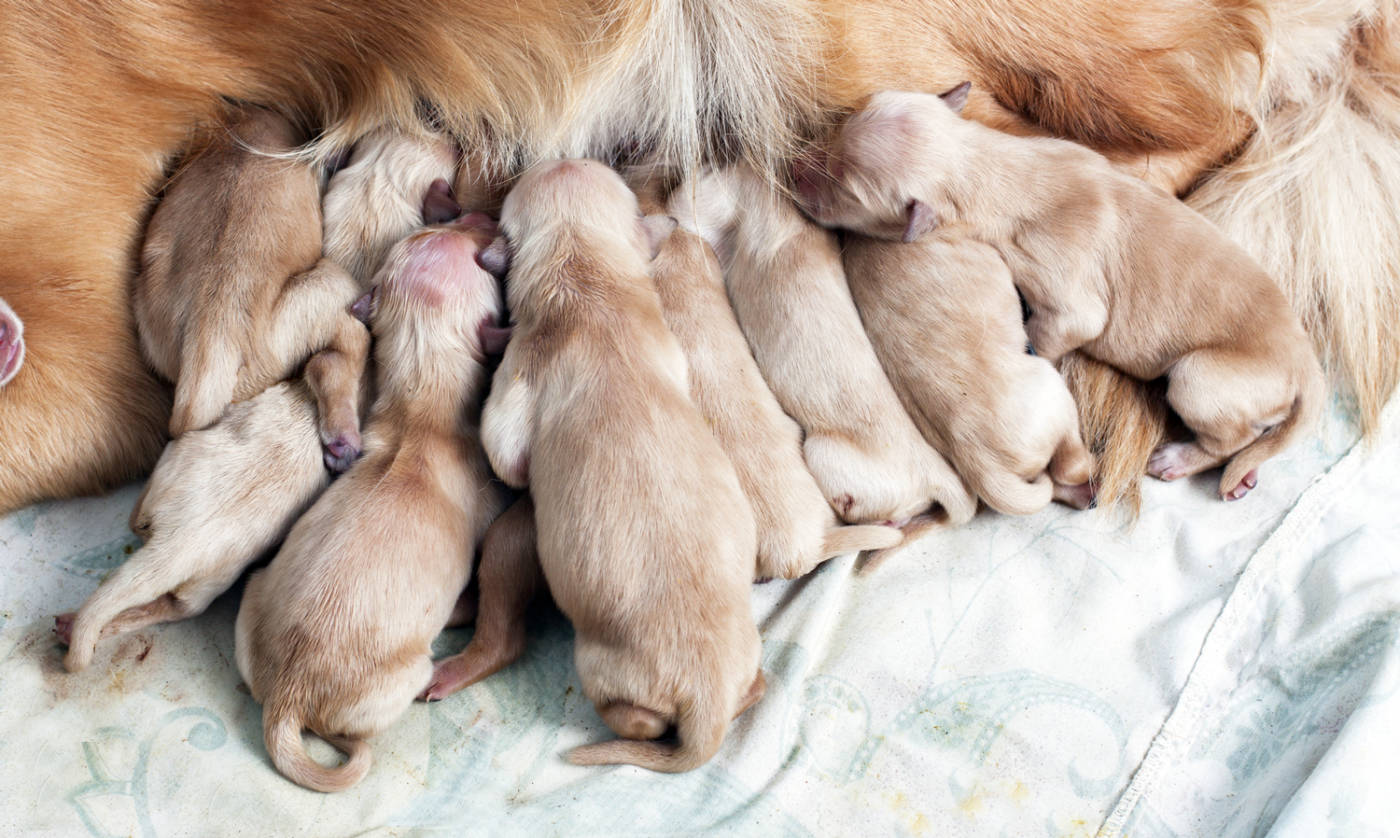
Do you need a heat lamp for puppies in a house?
Many people won’t need a heat lamp for puppies in a house. That is because we tend to keep our homes at a comfortable temperature at which puppies can compensate for heat simply by snuggling up together with their mommy dog. Using blankets will also help keep them adequately warm.
Nevertheless, even if the house is kept at the optimal temperature, the specific spot where the puppies are may not be. This could include laundry rooms or garages. In some cases, a mother may also reject her puppies, robbing them of her body heat. So having even a small heat lamp ready will be a good failsafe.
If the puppies are in an area that is generally below 75°F (24°C), a low-wattage heat lamp can help warm things up just enough to keep things at a comfortable temperature.
A heating solution for keeping puppies warm
This flat panel heater is a perfect solution for keeping puppies warm (even though it’s marketed for chickens!). You can move it closer or further away, and it has two heat settings. With a thermostat placed inside the puppy den, you will have what you need to keep the puppies at the ideal temperature.
That’s if they aren’t being kept outside, in which case you will likely require a more expensive setup.
Conclusion
Heat lamps are a great way to heat an area that is a little too cold for puppies. You can place heat lamps in such a way that the pups and the mother can position themselves at a distance they find comfortable.
Heat lamps require a bit of research and a lot of testing before one can use them safely and responsibly. In addition, they can heat things too much, which presents a serious problem if your puppies can’t move away from them to compensate for it. So a thermostat is a necessity when using heat lamps.
The bulbs used in heat lamps come in various strengths called wattages. That makes it easier to customize things and choose bulbs that work the best for your setup.
Would you like to read our post, Giving Puppies Attention: (3, 6, and 12 months)

